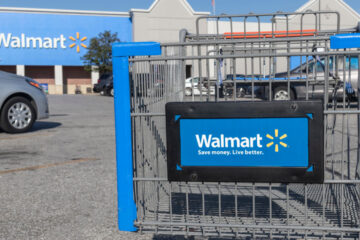Over the past several years, homeownership has become increasingly expensive, locking many young buyers out of the housing market.
Inflation has increased the cost of living across the board, raising home prices and making it difficult for homebuyers to save for a down payment while balancing rent payments and other financial obligations.
However, most first-time homebuyers may not need to save as much as they think for a down payment.
💵💰Don’t miss the move: Subscribe to TheStreet’s free daily newsletter 💰💵
The standard rule of thumb is to save 20% for a down payment. Experienced homeowners who have already gone through the process have already accrued equity, making a 20% down payment relatively painless.
However, most first-time homebuyers may only be able to put down between 5% and 10%.
Financial expert Dave Ramsey highlights the best ways first-time homebuyers can save for a home and warns of the hidden costs behind lower down payments.
Rising home prices, elevated mortgage rates, and mounting household debt have made it difficult for young buyers to afford a home.
Image source: Shutterstock
Dave Ramsey explains how the cost of living is impacting homebuyers’ down payments
Several decades ago, a down payment of 20% of the home’s value was fairly standard across most age groups. However, as home prices have surged with the cost of living, many first-time buyers find that 5-10% is much more feasible.
Credit card debt, student loan debt, and the cost of living are three of the most significant factors preventing buyers from saving for a down payment. Though it is typically recommended that prospective homeowners pay off high-interest debt before buying a home, most Americans have some type of outstanding debt.
Ramsey explains that creating a savings plan is the most effective way to achieve a major financial goal like buying a house. “Saving for a house is no walk in the park —unless that park is a mountain. But when you set a clear goal, you can see a light at the end of the tunnel,” he wrote.
More on homebuying:
The White House will take surprising approach to curb mortgage ratesHousing expert reveals surprising ways to reduce your mortgage rateDave Ramsey warns Americans on a homebuying mistake to avoidWarren Buffett’s Berkshire Hathaway sounds the alarm on the 2025 housing market
Purchasing a home within your budget means that monthly homeownership costs don’t exceed a quarter of your monthly income, including taxes, insurance, and homeowners association fees.
Ramsey warns those saving for a down payment to ignore the temptation to put less than 5% down. “Anything less than 5–10% is actually a very weak down payment, not to mention a sure-fire way to wind up upside down on a home,” he explained. “And you’ll waste a lot of money in interest and fees over the life of your mortgage.”
Lower down payments are more expensive for homebuyers in the long run
As of April 2025, the average down payment on a home in the U.S. is 15%, or $54,310, per Bankrate analysis. However, first-time homebuyers typically make lower-than-average down payments, as they don’t have the equity from previous homes to supplement the payment.
While it’s common to have a down payment of less than 20%, Ramsey explains that it becomes much more costly over time.
Related: Dave Ramsey warns home buyers to avoid major mortgage mistake
“The rule of thumb for down payments is this: A smaller down payment means you spend more on your home — a bigger down payment means you spend less,” he continued.
“Why is this true? Because the size of your down payment impacts three things: the need for PMI, your monthly mortgage payment, and the total cost of interest.”
When buyers put less than 20% down, lenders require Private Mortgage Insurance (PMI) to protect their assets until 20% of the home is paid off. PMI, combined with additional interest, means that buyers are paying tens of thousands more in the long run.
Related: Veteran fund manager unveils eye-popping S&P 500 forecast


